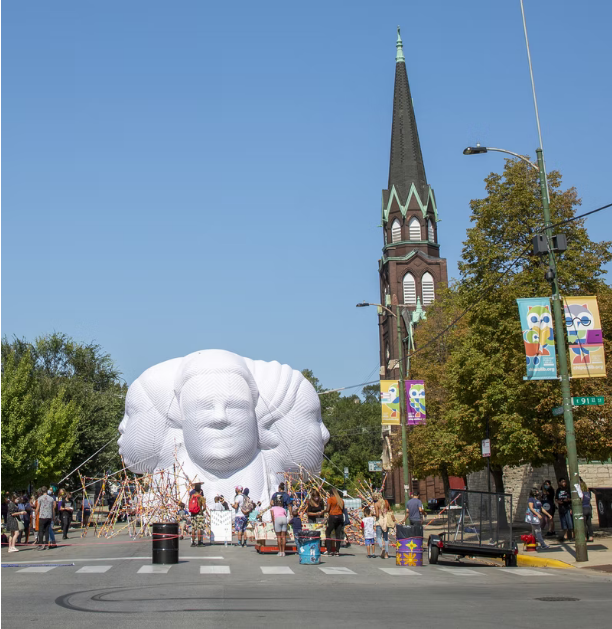Floating Museum: A Lion for Every House
@ The Art Institute of Chicago
111 S Michigan Ave, Chicago, IL 60603
On view through Monday, October 17th
The Chicago art collective Floating Museum—co-directed by Jeremiah Hulsebos-Spofford, Faheem Majeed, Andrew Schachman, and avery r. young—uses art to explore relationships among community, architecture, and public institutions. For this project, the Art Institute invited the collective to mine the museum’s photography collection as the starting point for a new site-specific installation—one that further connects the museum to the communities it serves and aims to assemble a new community in the galleries.
Floating Museum, along with three curators in Photography and Media at the Art Institute—Grace Deveney, Elizabeth Siegel, and Matthew Witkovsky—extended invitations to 10 photographers and paired them with 10 local “hosts”—political leaders, activists, and arts supporters in the city. In a series of Zoom conversations, Floating Museum talked extensively with each host about their lives and experiences. Each host was asked to choose one of three photographs from the Art Institute’s collection, and a copy of that work was sent to the host to display in a place they had designated as “home.” Each photographer made a portrait of their host with their chosen work in that home setting. Finally, Floating Museum incorporated each new photograph into a lightbox sculpture further illuminated by domestic lighting. A Lion for Every House brings together all of these components in the Art Institute’s galleries: the 30 original photographs from the collection, including the 10 ultimately selected by each host; the new photographs taken of the hosts and their selected work; and the sculptural installation inspired by the entire process.
The exhibition takes its title from Sonia Sanchez’s epic poem, Does Your House Have Lions? In Sanchez’s telling, lions stand in for the people and things that protect a family and a home; at the Art Institute, they famously guard the entrance to a vast repository of artworks held for public benefit. By creating a circuit in which copies of museum objects move to other homes, are reproduced and transformed in those settings, and then return to the galleries and inspire new work, the exhibition explores how the walls between institutional, civic, domestic, and community spaces can become more porous. It also invites us to consider the power of collective and collaborative work and to reflect on what it means for an institution and a community to be generous and accessible.
Image: From the Floating Museum public art exhibition Critical Transit Assembly (CTA), 2018–19. Photo by Eric Perez
Official Website
More events on this date
Tags: A Lion for Every House, Andrew Schachman, avery r. young, Chicago, Elizabeth Siegel, epic poem, Faheem Majeed, Floating Museum, Floating Museum: A Lion for Every House, Grace Deveney, Illinois, jeremiah hulsebos-spofford, Loop, Matthew Witkovsky, The Art Institute of Chicago

« previous event
next event »